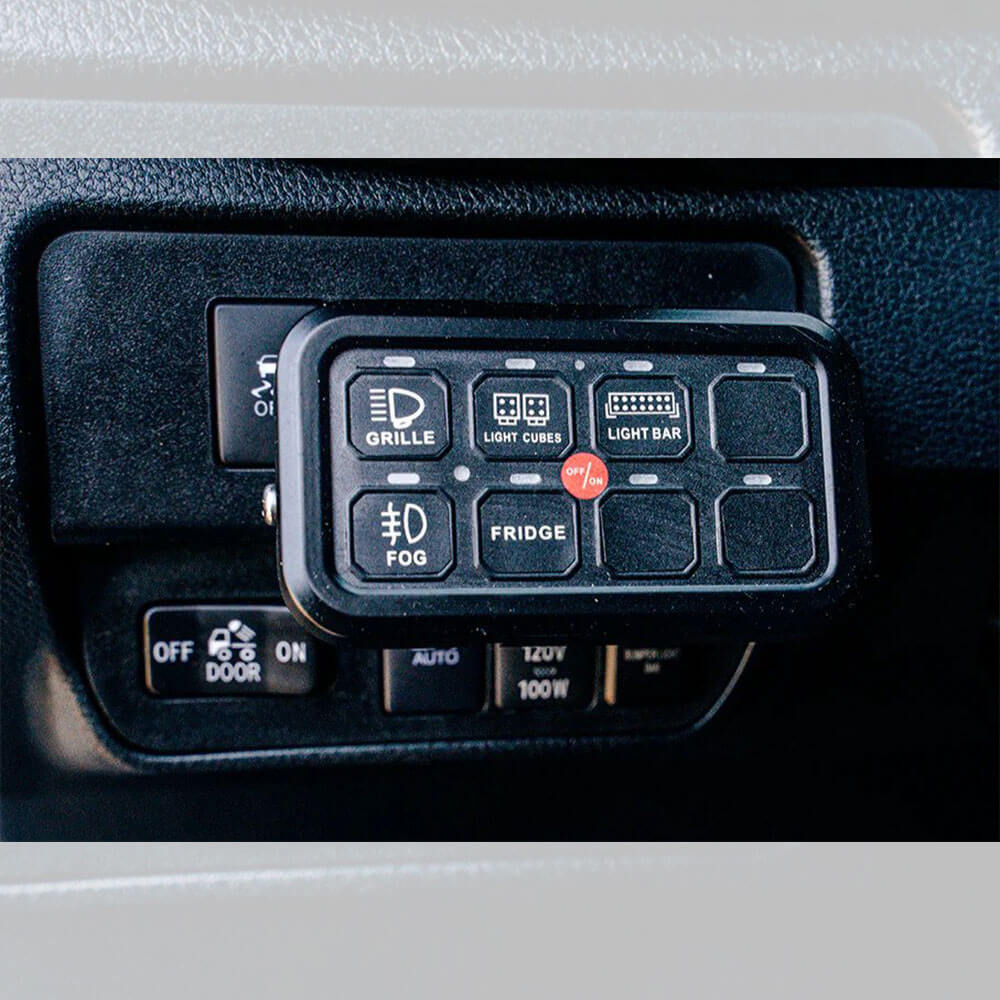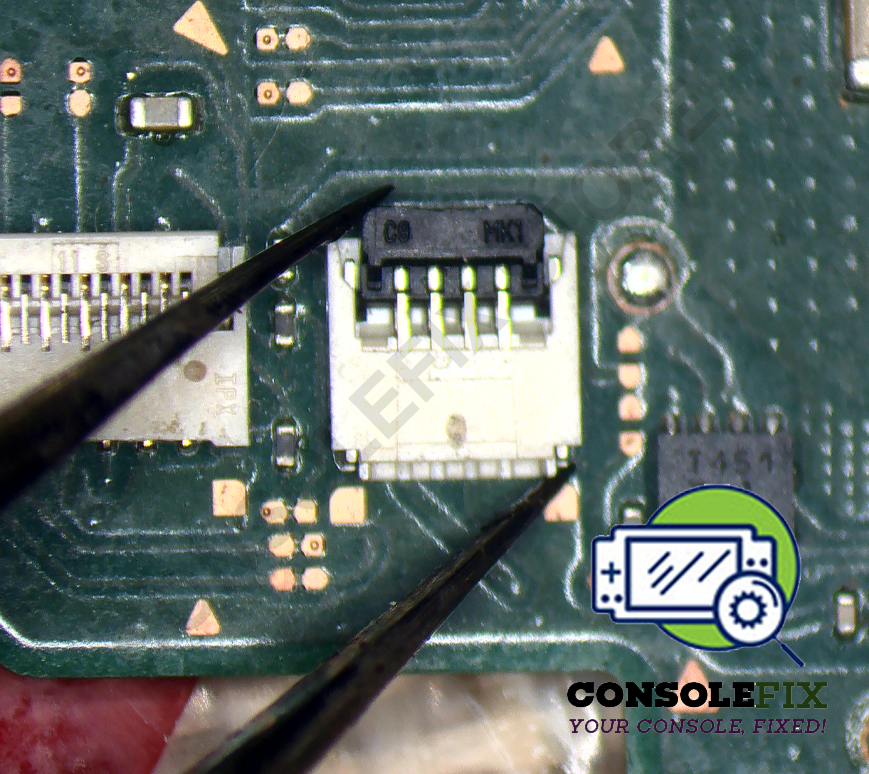The Manufacturing Process Behind Switch Over Backlighting: What You Required to Know
The manufacturing process behind button backlighting involves intricate actions that secure capability and durability. From the option of materials to the setting up of components, each stage is necessary. Automated machinery plays a significant duty in integrating LEDs and diffusive aspects. Quality assurance procedures better guarantee that the end product meets requirements. As customization alternatives expand, the possibility for cutting-edge styles ends up being obvious. What factors will form the future of switch backlighting modern technology?
Recognizing Change Backlighting Modern Technology
Although switch backlighting may appear like an easy attribute, it includes numerous technologies that improve customer experience in electronic tools. At its core, backlighting serves to light up buttons, making them visible in low-light environments. This capability counts on different techniques, such as LED and fiber optic technologies, each offering special advantages. LEDs are widely favored for their effectiveness, durability, and vivid colors, permitting personalized illumination options. On the other hand, optical fiber can create a softer radiance, giving a more aesthetically pleasing appearance.Moreover, the integration of backlighting can boost user access, specifically for people with aesthetic impairments. The layout of backlit buttons additionally considers energy consumption, as modern tools intend to stabilize illumination with battery life. Inevitably, the application of button backlighting technology plays an essential role in enhancing the functionality and appeal of digital tools, transforming normal user interfaces into aesthetically engaging experiences.
Key Elements of Backlit Switches
The essential components of backlit switches make up a number of key elements that collaborate to supply efficient illumination and capability. At the core is the switch mechanism itself, which can be either mechanical or electronic, permitting user interaction. Surrounding this device are LED lights, which give the lighting essential for presence in low-light conditions. These LEDs are usually mounted on a circuit card, assuring proper connectivity and power distribution.Additionally, a diffuser is commonly used to uniformly distribute the light sent out by the LEDs, developing a consistent radiance throughout the switch surface area. The real estate of the switch plays a considerable function too, as it needs to safeguard inner elements while permitting light to travel through purposefully positioned openings or translucent products. A printed visuals overlay may be applied to communicate signs or text, boosting usability and visual appeals. Together, these components ensure the effectiveness of backlit buttons in numerous applications.
Material Choice for Resilience and Aesthetics
Material option plays an essential duty in stabilizing resilience and aesthetic appeals in button backlighting. Secret homes of materials, such as resistance to use and ecological aspects, greatly affect their resilient performance. In addition, visual style factors to consider must straighten with capability to produce robust and aesthetically attractive products.
Secret Material Residence
Sturdiness and appearances are essential consider the material selection process for switch backlighting. The products used need to hold up against mechanical stress and anxiety, heats, and potential chemical direct exposure while maintaining their visual charm. Usual selections include polycarbonate and acrylic, which offer durable effect resistance and optical clearness. These materials can withstand duplicated use without fracturing or fading. In addition, the selection of light diffusion properties is important; products need to successfully disperse light evenly to improve visibility. Surface treatments, such as coatings, can additionally boost durability and scratch resistance. Eventually, choosing the best materials guarantees that switch over backlighting carries out dependably gradually, while also adding to the general layout and individual experience.
Aesthetic Design Considerations

Lasting Performance Factors
The interplay in between looks and functionality prolongs past visual appeal, encompassing the long-lasting efficiency of switch backlighting. Material choice is important in accomplishing toughness and keeping visual top qualities with time. Top notch plastics, such as polycarbonate or ABS, are typically liked for their resistance to use and environmental factors. In addition, the option of LED components effects durability, as superior-grade LEDs supply boosted brightness and lowered warm output. Coatings, such as uv-resistant or anti-fingerprint surfaces, can even more secure versus degradation and discoloration. By incorporating robust materials and advanced technologies, suppliers can assure that button backlighting not only satisfies aesthetic requirements however likewise stands up to the roughness of daily use, eventually improving user fulfillment and item life expectancy.
The Setting Up Process of Backlit Switches Over
The assembly process of backlit switches includes precise part preparation strategies to ascertain compatibility and functionality. A streamlined production line process is necessary to from this source enhance efficiency and decrease manufacturing time. In addition, robust quality assurance steps are implemented to guarantee that each button satisfies industry requirements and consumer assumptions.
Element Preparation Strategies
Effective assembly of backlit buttons starts with careful preparation of their elements, guaranteeing that each component meets the called for requirements for capability and longevity. This prep work process includes the choice of top quality materials, such as sturdy plastics and reliable light-emitting diodes (LEDs) Each element undergoes extensive examination and screening to identify any kind of flaws that might harm efficiency. In addition, parts may be pre-treated or covered to boost their strength versus deterioration. Switch Backlighting. Correct cleansing and dealing with strategies are also vital to avoid contamination prior to setting up. By implementing these element prep work strategies, manufacturers can simplify the assembly process, decrease the likelihood of failures, and boost the general high quality of the last backlit button product
Production Line Operations
Improving the production line process for backlit switches involves a series of coordinated steps that guarantee each element is correctly integrated right into the end product. At first, the base of the switch is positioned on the conveyor system, where automated equipment precisely places the LED lights into the assigned slots. Following this, a layer of diffusive product is included in ensure also light circulation. Next, the button cap is safely affixed, and electrical links are made with accuracy to guarantee functionality. Workers check the process at various phases, looking for positioning and safe and secure installations. Ultimately, the set up switches relocate to product packaging, all set for delivery. Each step is developed to boost efficiency while maintaining the stability of the last item.

High Quality Control Steps
Quality control actions in the assembly procedure of backlit switches are vital to confirm that each system satisfies strict efficiency and visual criteria. At different stages of setting up, aesthetic assessments are conducted to determine any defects in parts, such as inappropriate LED placement or malfunctioning soldering. Useful screening is performed to validate that the backlighting operates appropriately, with uniform brightness and shade consistency throughout each switch. Furthermore, automated testing tools might be employed to inspect for electric honesty and responsiveness. Any kind of units stopping working these analyses are revamped or thrown out to maintain quality control. Complete documents of these high quality checks additionally facilitates traceability and continuous renovation, confirming that manufacturing methods progress to meet consumer expectations and market requirements.
Top Quality Control Actions in Manufacturing
While assuring the honesty of button backlighting production, suppliers apply a variety of quality assurance actions to maintain high criteria. These steps encompass several phases, beginning with the selection of basic materials. Vendors are carefully vetted to ensure that just premium components are utilized. Throughout the manufacturing procedure, routine assessments are carried out to recognize any problems or inconsistencies in the backlighting systems.Automated testing tools plays a critical duty in examining the functionality and sturdiness of the items. This includes checks for luminescent strength, color precision, and lifespan. Furthermore, suppliers usually employ analytical procedure control (copyright) methods to keep track of production variables, allowing for instant changes when inconsistencies occur. Post-production, final evaluations guarantee that the finished items satisfy predefined specifications prior to they are packaged and delivered. By adhering to these detailed quality assurance procedures, producers can with confidence supply trusted and high-performing button backlighting solutions to their consumers.
Personalization Options for Enhanced Individual Experience
A wide range of personalization alternatives is readily available for switch backlighting, enabling users to boost their total experience. Users can pick from different colors, illumination degrees, and illumination results to customize the backlighting to their choices. Several suppliers give software that enables customers to develop dynamic lighting profiles, which can transform based upon use scenarios, such as video gaming or typing. Some switches also offer programmable features, enabling specific secrets to brighten in unique colors, helping in functionality and aesthetics.Furthermore, individuals may choose between various sorts of materials and coatings for the switch real estate, impacting both the look of the backlighting. Transparent or transparent products can boost light diffusion, producing a much more uniform glow. Inevitably, these modification options foster a personalized user interface that not just improves usability however also mirrors individual style, adding to a more appealing user experience.
The Future of Switch Over Backlighting Innovations
As technology remains to advancement, the future of switch backlighting technologies is poised to deliver much more advanced attributes and improved individual experiences. Arising fads indicate a change in the direction of flexible lighting systems that change illumination and shade based on customer preferences and ambient problems. This customization can improve use and accessibility, particularly for those with visual impairments.Furthermore, combination with wise home communities uses the possibility for synchronized lights results that boost the total atmosphere of a room. Developments in materials, such as flexible OLEDs, might cause thinner, a lot more effective layouts, permitting better versatility in applications.Additionally, energy-efficient services, such as solar-powered options and low-power leds, will add to a sustainable future in backlighting - Switch Backlighting. Advancements in useful link manufacturing techniques, such as 3D printing, may additionally promote personalization, enabling individuals to develop unique switch layouts. Generally, the future of button backlighting guarantees a mix of capability, aesthetic charm, and sustainability
Often Asked Questions
What Kinds Of Applications Typically Utilize Backlit Switches?
Backlit learn this here now buttons are generally utilized in different applications, including vehicle control panels, customer electronic devices, medical tools, and commercial control board. These applications take advantage of improved visibility and functionality, especially in low-light conditions, enhancing user experience and performance.
How Do Backlit Buttons Effect Energy Intake?
Backlit buttons can affect energy usage by calling for extra power for lighting. Relying on the innovation used, such as LED versus typical light bulbs, the effect on total power use can vary significantly throughout different applications.
Can Backlit Changes Be Fixed if Damaged?
Backlit buttons, if harmed, can frequently be fixed depending upon the level of the damage. Minor concerns like LED failing might be fixable, while a lot more extreme damage might necessitate total replacement of the switch.
What Are the Safety Standards for Backlit Switch Manufacturing?
The security criteria for backlit button manufacturing encompass electric security, product toughness, and user ease of access. Compliance with policies assurances that items are trusted, reduce risks, and give a secure user experience in different applications.

How Do Ecological Elements Influence Backlit Change Performance?
Environmental elements, such as temperature level and moisture, substantially influence backlit button efficiency. Severe conditions can influence materials' longevity and light outcome, potentially resulting in lowered capability and life-span of the switches under differing functional settings. Button backlighting might seem like a basic function, it incorporates different technologies that improve customer experience in digital gadgets. Material choice plays an important function in balancing durability and aesthetics in switch backlighting. Durability and aesthetic appeals are important elements in the product option procedure for button backlighting (Switch Backlighting). Aesthetic layout plays a vital duty in the selection of products for button backlighting, as it straight affects customer understanding and satisfaction. Some switches also provide programmable functions, permitting specific tricks to illuminate in unique shades, assisting in functionality and aesthetics.Furthermore, users might select in between various kinds of products and coatings for the switch real estate, impacting both the appearance and feeling of the backlighting